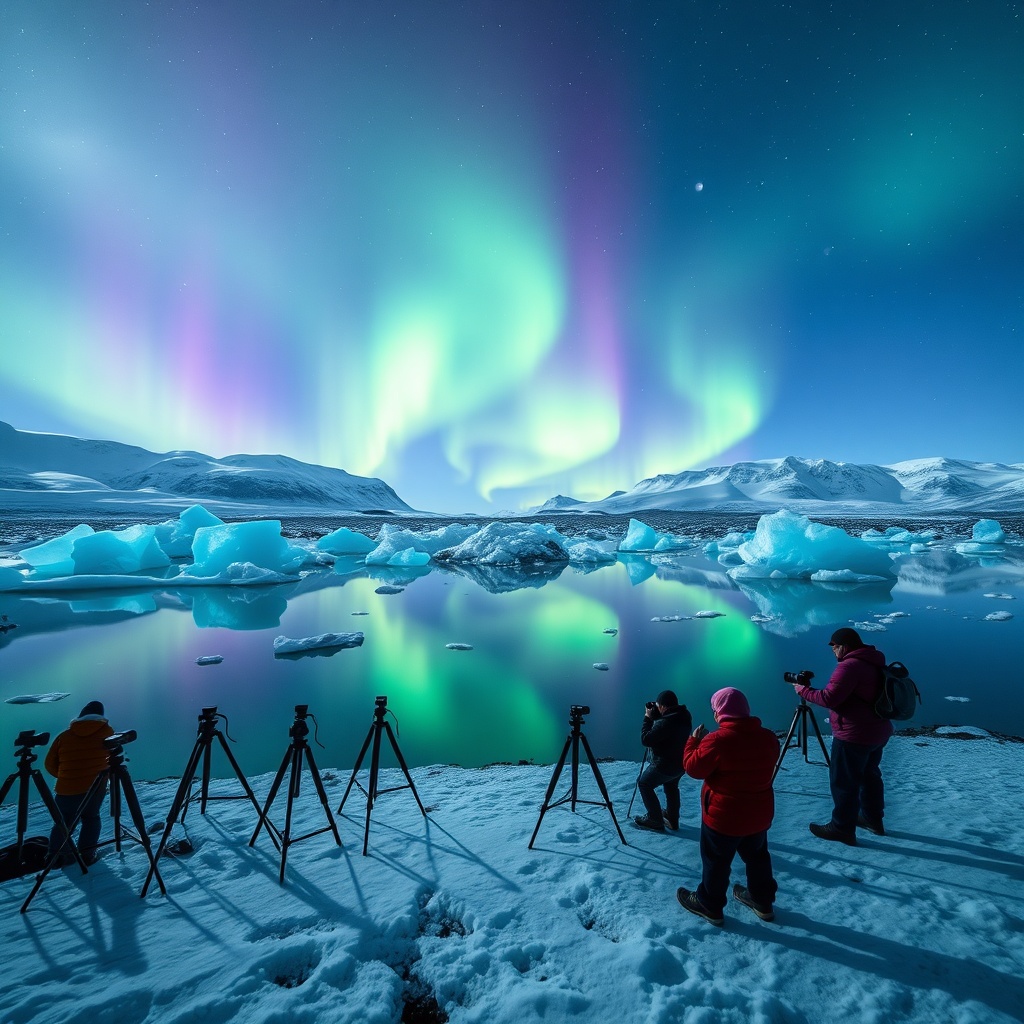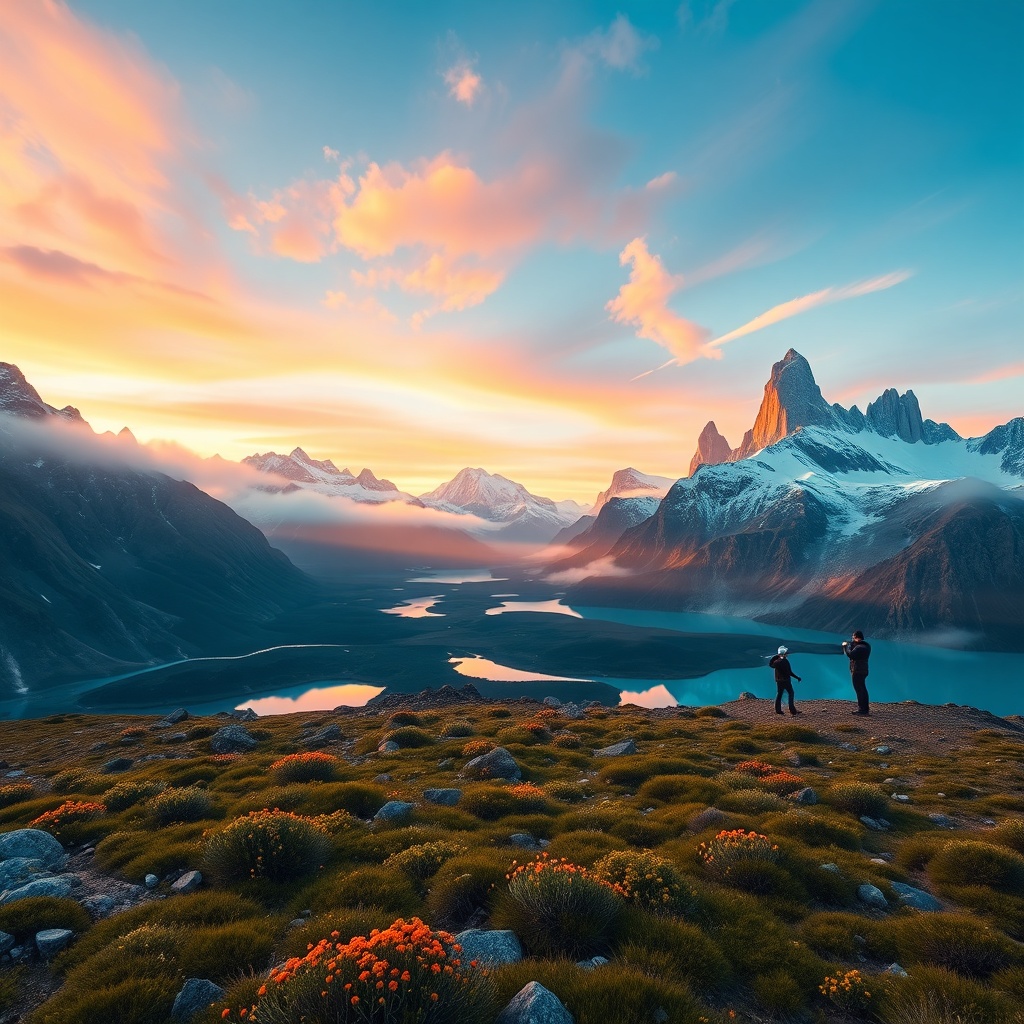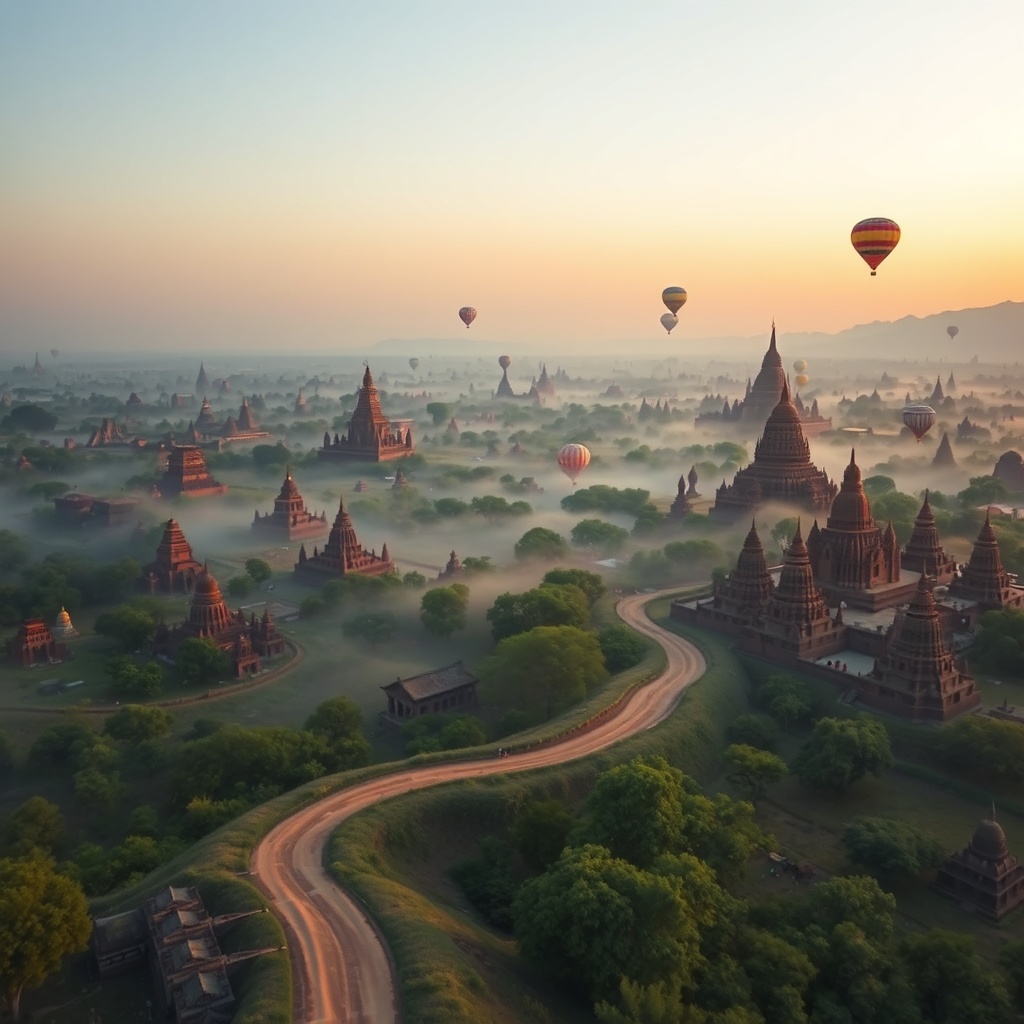List of photo zones loved by travel photographers
Are you searching for breathtaking locations where every corner is a ready-made masterpiece for your lens? Whether you’re a seasoned professional photographer, a hobbyist seeking inspiration, or an Instagram enthusiast chasing those perfect grid shots, you’re in the right place! This week, I journeyed through some of the world’s most visually enchanting photo zones flourishing in popularity among travel photographers right now (updated within the past week). What secrets do these legendary sightlines hold, and how can you tap into their unique visual magic? Let’s uncover the hidden (and not-so-hidden) places that will transform your travel gallery—and maybe even your perspective—forever. Join me as we embark on a visual odyssey amid sunlight, shadows, and spectacle!

Berlin, Germany, stands as a global icon for street art, attracting travel photographers and visual storytellers from every corner of the world. The city's vibrant murals, sprawling graffiti, and expressive installations transform entire neighborhoods into open-air galleries. This dynamic environment offers endless inspiration and unique backdrops for anyone passionate about urban photography and visual culture.
Let’s explore Berlin’s street art scene through the lens of the classic storytelling arc, inspired by Harmon's law, to reveal why it’s one of the top photo zones for creative minds.
Berlin’s neighborhoods, such as Kreuzberg and Friedrichshain, were once ordinary cityscapes. Decades ago, these districts were marked by gray walls and post-war scars. But as Berliners reclaimed their city, a new canvas emerged—one that would soon burst with color and creativity.
After the fall of the Berlin Wall, artists from around the globe flocked to the city. They saw opportunity in the blank facades and the spirit of freedom. This call to adventure invited both local and international creatives to express their stories, turning Berlin into a living museum of street art.
As you wander through the city, you cross into a world where every corner tells a different story. The famous East Side Gallery, a 1.3 km stretch of the former Berlin Wall, is now adorned with over 100 murals, each reflecting themes of hope, unity, and transformation. This threshold marks your entry into a space where art and history collide.
Photographers face challenges: changing light, crowds, and ever-evolving artwork. Yet, these obstacles become opportunities for creativity. Locals and fellow travelers often share tips about hidden gems—like the RAW-Gelände or the colorful facades of Haus Schwarzenberg—helping you capture the city’s authentic pulse.
As you hone your eye, you begin to notice the layers of meaning in Berlin’s street art. Political messages, cultural references, and personal stories are embedded in the walls. The interplay of colors, textures, and urban decay provides a rich tapestry for visual storytelling and creative expression.
To capture the perfect shot, you may need to wake up at dawn for soft light or wait patiently for the streets to clear. Sometimes, the best art is found in unexpected places—down narrow alleys or on temporary construction walls. The ordeal is part of the journey, pushing you to experiment with composition and perspective.
Your efforts are rewarded with striking images that capture Berlin’s soul. Each photograph becomes a visual masterpiece, blending the city’s turbulent history with its creative present. These photos not only enrich your portfolio but also offer viewers a glimpse into Berlin’s ever-changing identity.
Leaving Berlin, you carry more than just photographs—you take with you inspiration, new techniques, and a deeper appreciation for urban art. Sharing your images and stories, you inspire others to seek out the world’s hidden creative hubs. The cycle continues, as each visitor adds their own perspective to Berlin’s living canvas.
- Ever-Changing Canvas: The city’s art scene is constantly evolving, ensuring every visit brings new surprises.
- Historical Depth: Many murals reflect pivotal moments in Berlin’s past, offering context and storytelling depth.
- Community and Collaboration: Berlin’s artists often work together, creating collaborative pieces that highlight diversity and unity.
- Accessible Inspiration: Unlike traditional galleries, street art is free and accessible to all, making it a democratic form of creative expression.
| Location | Highlight | Photography Tip |
|---|---|---|
| East Side Gallery | Iconic murals on the Berlin Wall | Visit early morning for soft light and fewer crowds |
| RAW-Gelände | Industrial setting with diverse graffiti | Use wide-angle lenses for dramatic compositions |
| Haus Schwarzenberg | Hidden alley filled with layered street art | Look for close-up details and textures |
Berlin’s colorful street art is more than just a visual feast—it’s a testament to resilience, freedom, and the power of creative expression. For travel photographers, it’s a place where every shot tells a story, and every wall invites you to see the world differently. Embrace the journey, and let Berlin’s art transform your perspective.

For travel photographers, few destinations ignite the imagination quite like Iceland, especially for those in pursuit of the aurora borealis. Known as the "Aurora Hunters' Paradise," Iceland offers a rare blend of natural drama, accessibility, and photographic opportunity that makes it a bucket-list location for both amateur and professional photographers alike.
Let’s embark on a storytelling journey through the lens of Dan Harmon’s 8-stage structure, exploring why Iceland is the ultimate destination for capturing the Northern Lights and how you can make the most of your photographic adventure.
- The Setup: The Ordinary World
You’re a passionate photographer, perhaps feeling uninspired by city lights and routine landscapes. You dream of capturing something truly extraordinary—images that evoke awe and wonder. - The Call to Adventure
Stories and images of Iceland’s dancing auroras begin to fill your social feeds. The allure of photographing the Northern Lights over icy lagoons and volcanic plains becomes irresistible. You start researching flights, camera gear, and the best times to visit. - Crossing the Threshold
You arrive in Iceland, stepping into a world where waterfalls freeze mid-cascade and black sand beaches stretch beneath a sky alive with color. The anticipation builds as you prepare for your first night of aurora hunting. - Trials and Allies
The weather is unpredictable. Clouds roll in, temperatures drop, and patience is tested. You join a group of fellow photographers, sharing tips on ISO settings, tripod stability, and lens choices. The camaraderie becomes as memorable as the landscapes. - The Approach
You drive out to Jokulsarlon Glacier Lagoon, a renowned photo zone. The air is crisp, the sky clear. You set up your gear, heart pounding with anticipation as the first green ribbons appear on the horizon. - The Ordeal
The aurora intensifies, swirling in shades of green, purple, and pink. You battle freezing winds and numb fingers, adjusting your camera settings in the dark. Each shot is a test of skill and perseverance. - The Reward
You capture the perfect shot: luminous auroras reflected in glacial waters, with icebergs glowing under the celestial spectacle. It’s a moment of triumph, a visual masterpiece that tells a story of adventure and resilience. - The Return
Back home, you share your images and experiences. Your photos inspire others to seek their own adventures, and you realize that the journey has changed you—not just as a photographer, but as a storyteller and explorer.
Practical Insights for Aurora Photography in Iceland:
- Timing: Visit between September and April for the best chance to see the Northern Lights.
- Locations: Jokulsarlon Glacier Lagoon, Kirkjufell Mountain, Thingvellir National Park, and the black sand beaches of Vik are iconic photo zones.
- Equipment: Use a sturdy tripod, wide-angle lens (f/2.8 or faster), and remote shutter release. High ISO performance is key.
- Settings: Start with ISO 1600-3200, aperture wide open, and shutter speed between 5-20 seconds. Adjust based on aurora intensity.
- Preparation: Dress in layers, pack extra batteries (the cold drains them fast), and check aurora forecasts (vedur.is is a reliable source).
| Photo Zone | Best Time | Unique Features |
|---|---|---|
| Jokulsarlon Glacier Lagoon | October - March | Icebergs, reflections, wide horizons |
| Kirkjufell Mountain | September - April | Iconic mountain silhouette, waterfalls |
| Thingvellir National Park | October - March | Historic landscapes, rift valleys |
| Vik Black Sand Beach | September - March | Contrasting textures, dramatic seascapes |
Photographing the aurora in Iceland is more than a technical challenge—it’s a journey of patience, connection, and awe. The lessons learned under the shimmering sky will enrich your craft and your life, inspiring you to seek out beauty and adventure wherever you go.
Keywords: aurora photography, Iceland, Northern Lights, travel photography, photo zones

Patagonia is a name that instantly sparks the imagination of travel photographers worldwide. Stretching across southern Argentina and Chile, this region is renowned for its dramatic landscapes, towering granite peaks, turquoise lakes, and ever-changing skies. The mountains of Patagonia are not just a destination—they are a rite of passage for anyone passionate about landscape photography.
Let’s embark on a journey through the classic storytelling arc, exploring why Patagonia’s mountains are so beloved, and how visiting them can enrich your creative and personal life.
Most of us begin our photographic journey capturing familiar places—local parks, city skylines, or nearby hills. But the urge to discover something truly awe-inspiring is universal among travel photographers. The mountains of Patagonia, with their raw beauty and remote allure, represent the call to adventure.
Photos of the Fitz Roy massif or the jagged spires of Torres del Paine National Park ignite a longing to witness these wonders firsthand. Social media and travel magazines showcase images of golden sunrises painting the peaks, or the Milky Way arching over glacial lakes. The call is irresistible.
Patagonia’s remoteness, unpredictable weather, and rugged terrain can be intimidating. Many hesitate, worried about the cost, the logistics, or the physical challenge. But it’s precisely these obstacles that make the journey—and the resulting photographs—so rewarding.
Online communities, local guides, and experienced photographers offer advice: pack for all seasons, wake before dawn, and respect the land. Learning from those who have walked these trails before you is invaluable. They remind you that patience and persistence are key to capturing Patagonia’s fleeting moments of magic.
Arriving in Patagonia, you’re greeted by windswept plains and snow-capped peaks. The air is crisp, the colors vivid. Each step into the wilderness feels like entering another world. This is where your adventure—and your best photography—truly begins.
Unpredictable weather tests your resolve. One moment, the mountains are shrouded in mist; the next, they blaze in sunlight. Fellow travelers become allies, sharing tips and encouragement. The real ‘enemy’ is time—sunrise and sunset windows are brief, and the light changes fast. But these challenges sharpen your skills and fuel your creativity.
There will be moments of doubt—when clouds obscure the peaks, or fatigue sets in after a long hike. But then, the sky clears, and the mountains reveal themselves in all their glory. You capture the shot you dreamed of: crimson light on Fitz Roy, or the reflection of Torres del Paine in a still lake. These are the moments that make every hardship worthwhile.
You return home with more than just stunning images. Patagonia’s mountains teach resilience, patience, and respect for nature. Your photos inspire others, and your experience deepens your appreciation for the wild places of our planet. This journey transforms not only your portfolio, but also your perspective on life and adventure.
- Plan for the Elements: Patagonia’s weather is famously unpredictable. Layered clothing, waterproof gear, and a sturdy tripod are essential.
- Chase the Light: The best photos often happen at sunrise or sunset. Scout locations in advance and be ready to move quickly.
- Respect the Environment: Stay on marked trails, leave no trace, and be mindful of wildlife. Preserving Patagonia’s beauty is everyone’s responsibility.
- Connect with the Community: Join local tours or online groups to share experiences and tips. The photography community is a rich source of inspiration and support.
| Key Location | Best Time to Shoot | Signature Feature |
|---|---|---|
| Fitz Roy (Argentina) | Sunrise | Jagged peaks, alpenglow |
| Torres del Paine (Chile) | Sunset | Granite towers, turquoise lakes |
| Lago Pehoé | Blue hour | Mirror-like reflections |
Whether you’re a seasoned travel photographer or a passionate beginner, the mountains of Patagonia offer a journey of discovery—both visually and personally. Answer the call, and let your camera capture the magic that awaits in this unforgettable corner of the world.

Imagine standing atop an ancient pagoda, a gentle breeze brushing your face as the sky transitions from deep indigo to a warm, golden hue. This is the magic of sunrise over the temples of Bagan, Myanmar—a moment cherished by travel photographers and wanderers alike.
Bagan is more than just a destination; it is a living canvas where history, spirituality, and nature converge. With over 2,000 ancient temples scattered across a vast plain, the site offers endless opportunities for landscape photography and cultural immersion. The sunrise here is legendary, painting the sky with vibrant oranges and pinks while the mist gently hugs the temple spires.
- Atmospheric Drama: The interplay of morning mist, hot air balloons, and golden sunlight creates a surreal, almost dreamlike atmosphere. Each sunrise is unique, offering fresh perspectives and moods for your camera.
- Architectural Diversity: From grand, towering pagodas to humble brick stupas, the variety of temples ensures that every shot can tell a different story. Photographers can experiment with wide-angle vistas or focus on intricate details bathed in dawn light.
- Connection to Heritage: Capturing sunrise here is not just about aesthetics; it’s about documenting a sacred landscape that has witnessed centuries of devotion and change. Your photos become a bridge between past and present.
- Scout your location the day before. Some temples are more accessible and offer unobstructed views.
- Arrive early—popular spots fill up quickly, especially during peak season.
- Bring a tripod for low-light shots and experiment with different focal lengths to capture both wide landscapes and temple silhouettes.
- Respect local customs and avoid climbing on restricted structures. The best photos come from a place of mindfulness and respect.
Witnessing the sunrise over Bagan is more than a photo opportunity—it’s a lesson in patience, presence, and appreciation for beauty. The stillness of dawn invites reflection, helping you start your day with gratitude and wonder. Whether you’re a seasoned photographer or a curious traveler, this moment reminds you of the world’s vastness and the timeless stories etched into its landscapes.
So, next time you plan a photography adventure, let Bagan’s sunrise inspire you to seek out moments that blend natural splendor with cultural depth. The memories—and the images—you capture here will be treasures for a lifetime.
| Aspect | Benefit |
|---|---|
| Visual Impact | Unparalleled golden hour lighting, dramatic silhouettes, and ethereal mist |
| Cultural Value | Connects you to Myanmar’s spiritual heritage and ancient architecture |
| Personal Growth | Fosters mindfulness, patience, and a deeper appreciation for the present moment |
Keywords: Bagan, sunrise photography, travel photography, Myanmar, temples